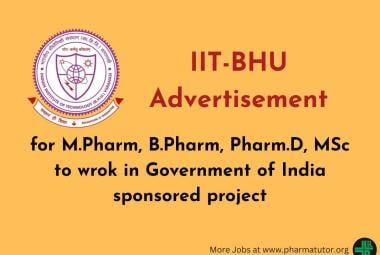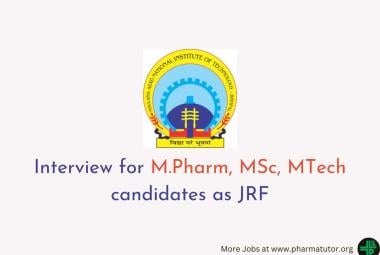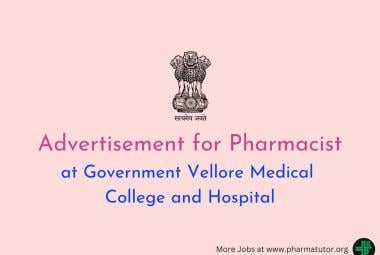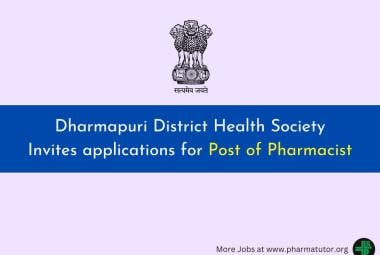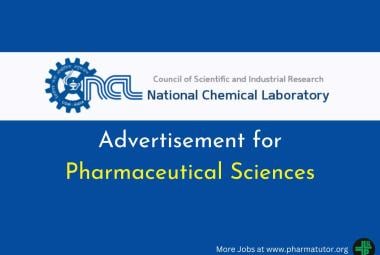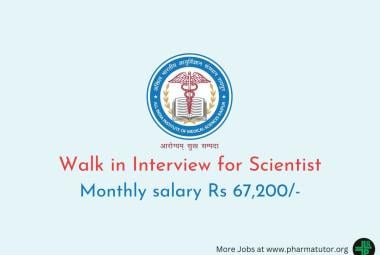{ DOWNLOAD AS PDF }
About Authors:
Krutika J. Bhalodiya*, Nehal Ghelani, Darshan Madiya, Shital Faldu
Department of Quality Assurance
Smt. R. D. Gardi B. Pharmacy College, Rajkot
bhalodiyakruti1@gmail.com
Abstract
UV Spectrophotometric method has been developed for simultaneous estimation of Amiloride (AML) and Torsemide (TSM) in bulk drug and in their combined dosage form by first order derivative. This method utilizes methanol as a solvent and λmax of Amiloride and Torsemide selected for analysis was found to be 248 nm(at ZCP of TSM) and 308 nm (at ZCP of AML) respectively. Linearity was observed in the concentration range of 4-14μg/ml for AML (r2 = 0.999) and 4-20 μg/ml for TSM (r2 = 0.998). The accuracy and precision were determined and found to comply with ICH guidelines. This method showed good reproducibility and recovery with % RSD in the desired range. The proposed methods can be successfully applied for the routine analysis of both the drugs. This method was simple, rapid, accurate, and sensitive.
REFERENCE ID: PHARMATUTOR-ART-2168
INTRODUCTION
Amiloride is a potassium-sparing diuretic, chemically known as,3,5-diamino-6-chloro-N-(diaminomethylene)pyrazine-2-carboxamide.[1] It is used in the management of hypertension and congestive heart failure. Itinhibits renal epithelial Na+ Channel.[2] Torsemideis a pyridine-sulfonyl urea type loop diuretic, chemically known as, 1-{4[(3methylphenyl)amino]pyridine-3-sulfonyl}-3(propan-2-yl)urea.[3] It is used in the management of edema associated with congestive heart failure. It inhibit the Na+/K+/2Cl- carrier systemIt is an anti hypertensive drug and is used in treatment of angina[2]. Amiloride is official in IP, BP, USP[1,3,4] whereas Torsemide is official in USP [3].The chemical structures of Amiloride & torsemide are shown in Fig. 1.Combination drug products of Amiloride and Torsemide are widely marketed and used in the treatment of Edema associated with congestive heart failure & hypertension.Several analytical methods like UV spectrophotometry, HPLC, HPTLC, UPLC have been reported for estimation of Amiloride & Torsemide by single drug and also by combining with other drugs.[5,6,7,8] However no method has been reported till date for the simultaneous estimation of Amiloride & Torsemide using the UV spectrophotometric method. The present paper describes the development and validation of two analytical methods for simultaneous estimation of Amiloride & Torsemide by UV spectrophotometry in tablet dosage form; the methods include first order derivative method. The proposed methods are optimized and validated as per the ICH guidelines [9,10]
Fig. 1 Chemical structures of the analytes (A) Amiloride & (B) Torsemide
MATERIALS AND METHODS
Instrumentation
Double beam UV-visible spectrophotometer (heλios Alpha, Model - V 7.09) having two matched quartz cells with 1 cm light path. An Electronic analytical balance (Contech, CA34 Model) was used in the study.
Material and reagent
Amiloride (AML) was obtained from Wockhardtltd.L1chikalthana, Maharastraand Torsemide (TSM) bulk powder was kindly gifted by IPCA Labs ltd., Ahmedabad Methanol reagent was from college supply.
Preparation of Standard Stock solution of AML and TSM:
Accurately weighed quantity 100 mg of AML and TSM were transferred into separate 100 ml volumetric flask, dissolved and diluted up to mark with methanol(100 ml). This will give a stock solution having strength of 1000 μg/ml of each.
Preparation of Working Standard Solution of AML and TSM:
100 µg/ml of AML and TSM solution were prepared by diluting 10 ml of stock solution to 100 ml with methanol in separate 100 ml volumetric flask. Suitable aliquots of this solution were diluted up to the mark with methanol to get the concentration range of 4,6,8,10,12,14 μg/ml for AML and 4,8,12,16,20 μg/ml for TSM.
Selection of analytical wavelength:
4-14 µg/ml solutions of AML and 4-20 µg/ml solutions of TSM were prepared in methanol by appropriate dilution of working standard solution and spectrum was recorded between 200-400 nm and all zero order spectrums (D0) were converted to first derivative spectrum (D1) using delta lambda 1.0 and scaling factor 5.0. The overlain first derivative spectrums of AML and TSM at different concentration were recorded. The zero crossing point (ZCP) of AML was found to be 308 nm (Figure 2) and ZCP of TSM was found to be 248 nm (Figure 3).
Preparation of calibration curve:
Standard solutions of AML in the concentration range of 4 to 14μg/ml obtained by transferring (0.4, 0.6, 0.8, 1.0, 1.2, 1.4 ml) of AML working standard solution (100 μg/ml) to the series of 10 ml volumetric flasks and standard solutions of TSM in the concentration range of 4 to 20 μg/ml were obtained by transferring (0.4, 0.8, 1.2, 1.6, 2.0ml) of TSM working standard solution (100 μg/ml) to the series of 10 ml volumetric flasks. Then volume was adjusted up-to mark with methanol. All dilutions were scanned in wavelength range of 200 nm to 400 nm. All zero order spectrums (D0) were converted to first derivative spectrum (D1). The absorbance was plotted against the respective concentrations to obtain the calibration curves.
VALIDATION PARAMETERS
Validation of developed method was carried out as per ICH guideline.[9] Parameters such as Linearity and range, Accuracy, Precision, LOD and LOQ were taken up as tests for analytical method validation.
Linearity and Range:
Appropriate volume of aliquot from AML and TSM working standard solution was transferred to volumetric flask of 10 ml capacity. The volume was adjusted to the mark with methanolto give a solutions containing 4-14 µg/ml AML and 4-20 µg/ml TSM. All D1 Spectrum were recorded using above spectrophotometric condition. D1 absorbance at 248 nm and 308 nm were recorded for AML and TSM, respectively (n=5). Calibration curves were constructed by plotting average absorbance versus concentrations for both drugs. Straight line equations were obtained from these calibration curves.
Precision
Precision of the method was determined in the terms of Repeatability, Intraday and Interday precision. Repeatability (% RSD) was assessed by analyzing test drug solution within the calibration range, six times on the same day. Intraday variation (% RSD) was determined by analysis of this solution three times on the same day. Interday precision (%RSD) was determined by analysis of this solution on three different days.
Limit of detection (LOD) and limit of quantitation (LOQ)
They were calculated as 3.3 σ/S and 10 σ/S respectively. Where σ is the standard deviation of the response (y-intercept) and S, is the mean of the slope of calibration plot.
Recovery Studies:
Recovery studies were done so as to check the accuracy of the method. Known amounts of standard solutions of AML and TSM were added to pre-quantify dosage form solution of AML and TSM and D1absorbance were determined at 248 nm and 308 nm respectively. Concentration of the drug in the mixture was calculated using the regression equations. The analysis was done in a set of 3 replicates.
Application of Proposed Method to dosage form:
First Order Derivative Spectrophotometry[10]
The powder of twenty tablets were weighed. An accurately weighed quantity of the powder equivalent to about 5mg of amiloride was taken in 10 ml volumetric flask and dissolved with methanol and further diluted upto the mark with same solvent. The solution was then filtered through the Whatmann filter paper No. 41. Necessary dilutions are made with methanol to give final concentration 5 µg/ml and 10 µg/ml of Amiloride and Torsemide respectively. The solutions are then scanned between 200-400nm and absorbances are measured at respective wavelengths. The concentration of each drug was calculated using equation of straight line.
RESULTS AND DISCUSSION
Zero cross point (ZCP):
ZCP of AML and TSM were detected at 308 nm and 248 nm, respectively and overlain D1spectra were recorded (figure 4). Regression characteristics for AML and TSM are shown in Table 4.
Method Validation:
The linearity range for AML and TSM were 4-14 μg/mL and 4-20 μg/mL respectively. Recovery studies was carried out by addition of standard drug solution to pre-analyzed dosage form solution at three different concentration levels (80%, 100% and 120%) taking into consideration percentage purity of added bulk drug sample. The results of the recovery studies are found to be satisfactory for AML and TSM and shown in Table 1 and 2 respectively.The result of assay procedure obtained was showed in Table 3. Summary of Other validation parameters including Repeatability, Intraday, Interday, LOD and LOQ were found to be satisfactory and are shown in Table 5.
CONCLUSION
The results obtained by applying the suggested procedures, it is proved that the proposed method is accurate, precise, simple, sensitive, selective and rapid and can be applied successfully in routine analysis for the estimation of AMLand TSMin their combined pharmaceutical dosage form. The developed method was validated as par ICH guidelines.
ACKNOWLEDGEMENT
The authors are thankful to Smt. R. D. Gardi B. Pharmacy College, Rajkot, Gujarat, India for providing necessary facilities to carry out this work. We are also thankful to Wockhardtltd.L1chikalthana, Maharastra &IPCA labs ltd., Ahmedabad for providing the free gift samples of Amiloride and Torsemide which was required for our research work.
FIGURE AND TABLES
Table-1 Result of Recovery Studies for AML in dosage form:
|
Amount of AML in mixture (μg/ml) |
Amount of Std AML added (μg/ml) |
Total amount of AML (μg/ml) |
Total amount of AML found (μg/ml) Mean* ± SD |
%Recovery |
|
10 |
0 |
10 |
09.93 ± 0.4705 |
99.30 |
|
10 |
8 |
18 |
18.43 ± 0.6957 |
102.38 |
|
10 |
10 |
20 |
20.03 ± 0.1553 |
100.15 |
|
10 |
12 |
22 |
21.89 ± 0.0793 |
99.50 |
[*=mean value of 3 determination]
Table-2 Result of Recovery Studies for TSM in dosage form:
|
Amount of TSM in Mixture (μg/ml) |
Amount of Std TSM added (μg/ml) |
Total amount of TSM (μg/ml) |
Total amount of TSM found (μg/ml) Mean* ± SD |
%Recovery |
|
12 |
0 |
12 |
12.13 ± 0.2137 |
101.08 |
|
12 |
9.6 |
21.6 |
21.56 ± 0.4990 |
99.81 |
|
12 |
12 |
24 |
24.63 ± 0.4932 |
102.64 |
|
12 |
14.4 |
26.4 |
26.44 ± 0.0721 |
100.15 |
[*=mean value of 3 determination]
Table-3: Analysis of AML and TSM in dosage form:
|
Tablet dosage form |
Label claim(mg) |
%Recovery ± SD (% of label claim*) |
||
|
AML |
TSM |
AML |
TSM |
|
|
|
5 mg |
10 mg |
100.02±0.461 |
99.09±0.313 |
[*=mean value of 5 determination]
Table-4: Regression Characteristics:
|
Characteristics |
AML at 248 nm |
TSM at 308 nm |
|
Linearity (μg/ml) |
4-14 |
4-20 |
|
Regression Equation |
Y= 0.042X + 0.043 |
Y= 0.062X + 0.037 |
|
Slope |
0.042 |
0.062 |
|
r2 |
0.999 |
0.998 |
|
Intercept |
0.043 |
|-0.213| |
|
S.D. of Intercept |
0.001732 |
0.006083 |
TABLE-5: VALIDATION PARAMETERS:
|
Parameters |
AML at 248 nm |
TSM at 308 nm |
|
Repeatability(%RSD) (n=6) |
0.6657 |
0.1439 |
|
Precision (%RSD) |
|
|
|
Intra-day (n=3) |
0.3344-0.4420 |
0.1990-0.3703 |
|
Inter-day (n=3) |
1.1747-2.0032 |
0.3863-0.9728 |
|
LOD (μg/ml) |
0.1360 |
0.3238 |
|
LOQ (μg/ml) |
0.4124 |
0.9811 |
|
% Recovery (n=3) |
99.34%-102.25% |
99.82%-102.64% |
|
Assay (mean ± S.D.) (n=5) |
100.02±0.461 |
99.09±0.313 |
LOD: Limit of Detection, LOQ: Limit of Quantitation, R.S.D.: Relative standard deviation, S.D.: Standard deviation
REFERENCES
1. Indian Phamacopoeia, Volume-I & Volume-II, Government of India, Ministry of Health and Family Welfare, Published by The Indian Pharmacopoeia Commission, Ghaziabad. 2010, pp 795,796
2. Rang HP, Dale MM, Ritter JM and Moore PK, Pharmacology, 5th Edn; Elsevier, New Delhi 2006, pp 251,442.
3. The United States Pharmacopoeia-30, NF-25, Asian edition, Rockville, MD: The US Pharmacopoeial Convention, Inc. 2004, pp 113,1088,1869.
4. British Pharmacopoeia, Volume I-II, London: The Department of Health,: HMSO Publication; 2009, pp 2789
5. Ines TM, Pope SG “Simultaneous determination of Amiloride and Furosemide in pharmaceutical formulations by first digital derivative spectrophotometry.” International Journal of Pharmaceutics. 2002 , 249, pp 117-26
6. Laxmhmi VK “Spectrophotometric Determination of Amiloride in bulk and pharmaceutical formulation.” International journal of pharmacy and pharmaceutical science. 2013, 5, pp 975-1491
7. Marothu VK and Dannana GS “Simple Spectrophotometric Determination of Torsemide in Bulk Drug and in Formulations.” Journal of Chemistry. 2008,5, pp 473-478
8. Gupta JA, Kanojiaa GP, Yadava VS, Wakode SR “Development and validation of a UV spectrophotometric method for the estimation of torsemide in bulk and in tablet dosage form.” Journal of chemistry & Pharmaceutical Research 2010, 2, pp 513-517
9. ICH guideline Q2 (R1). Validation of analytical procedures: text and methodology. Geneva: 1996.
10. Beckett AH. And Stenlake JB. Practical Pharmaceutical Chemistry, part-II; 4th Edn; CBS Publisher and Distributors, New Delhi, 2007, pp 275-336
|
PharmaTutor (ISSN: 2347 - 7881) Volume 2, Issue 5 Received On: 25/03/2014; Accepted On: 01/04/2014; Published On: 01/05/2014 How to cite this article: KJ Bhalodiya, N Ghelani, D Madiya, S Faldu; Analytical Method Development and Validation of First Order Derivative Spectrophotometric Method for Simultaneous Estimation of Amiloride and Torsemide in their Combined Pharmaceutical Dosage Form; PharmaTutor; 2014; 2(5); 138-143 |
NOW YOU CAN ALSO PUBLISH YOUR ARTICLE ONLINE.
SUBMIT YOUR ARTICLE/PROJECT AT articles@pharmatutor.org
Subscribe to Pharmatutor Alerts by Email
FIND OUT MORE ARTICLES AT OUR DATABASE




